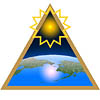An 8-9 Week Unit for Middle School Level
Essential Questions:
- How do changes in physical environment affect our ecosystems?
- What impacts will a warming climate have on Alaska Seas and Watersheds?
Enduring Understandings:
- Climate patterns cause physical changes in the environment.
- Physical changes in the environment can change the conditions for life.
- Science and technology can be used to detect and solve problems.
This unit is designed for 8th grade, but could be adapted for grades 6-8. Students learn how changes in physical environments affect our ecosystems by investigating how sea ice is changing over time and how melting glaciers affect stream flows, erosion, and habitats for fish and wildlife. They participate in a WebQuest to explore how a warming climate might affect life in the Bering Sea. Students then take a close look at changes in their local environment by interviewing long time residents and observing repeat photographs of the local landscape. Finally they create a digital story to share the potential effects of a warming climate with others.
Ocean Literacy Principles Addressed:
- The Earth has one big ocean with many features.
- The ocean supports a great diversity of life and ecosystems.
- The ocean and humans are inextricably interconnected.
 |
Investigation 1: Ch-Ch-Ch-Changes How is sea ice changing over time? |
 |
Investigation 2: Impacts of Change in Glacier Ice What changes occur in a landscape when a glacier melts and recedes? |
 |
Investigation 3: Bering Sea Expedition How does a warming climate cause physical changes in the Bering Sea that will affect the conditions for life for a variety of species? |
 |
Investigation 4: Changes in Our Local Environment What changes in our local environment have taken place over the last 50 years? |
 |
Investigation 5: Explaining Impacts of a Warming Climate How can we help others learn about the potential effects of a warming climate on our community, in the Bering Sea and/or in the Arctic? |
Authors:
Derek Bynagle, Kenai Peninsula School District
Linda Casassa, Kuspuk School District
Brenda Papoi, Sitka School District
Carol Scott, Fairbanks Northstar Borough School District
Stephanie Hoag, Curriculum Consultant, Juneau
Marilyn Sigman, Science Content Specialist
Marla Brownlee, Alaska Sea Grant








